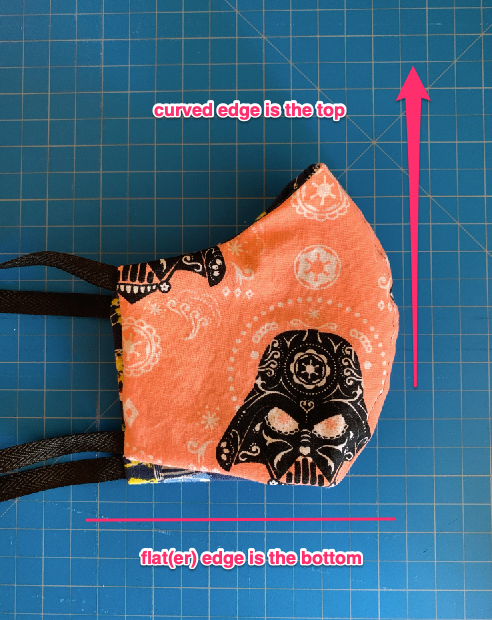About the masks
- All masks are homemade (with love!) from double layered 100% cotton
- Ties are made from cotton twill, bias tape or elastic, depending on style
- PLEASE WASH BEFORE FIRST USE! Launder as you normally would; per the CDC, no special treatment is required
Tips
- I've found the best fit is when the top tie is around the crown of my head and the lower one at the base of my neck; it also really helps to wear a hat or a high ponytail/bun so the top tie has something to adhere to
- For those who wear glasses, it helps to fold up a Kleenex and tuck it in (between the mask and your face) around the nose area... this seems to prevent hot air from escaping and fogging up your glasses
- These masks are reversible, however, it's advisable to pick one side as "out" so you are consistent in keeping the outside of the mask facing outward
- Sourcing high quality materials has been difficult, so at some point your ties may fray. If this happens:
- Try tying additional knots in the ends
- Cut off existing ties about 2 inches from mask and replace with your own ties (shoelaces work great); you can also do this if the ties are too tight/loose/short/long


Sew Your Own!
If you can sew and want to make your own, these are the patterns I recommend:
Information from the CDC regarding cloth masks
CDC on Homemade Cloth Face Coverings
- CDC recommends wearing cloth face coverings in public settings where other social distancing measures are difficult to maintain (e.g., grocery stores and pharmacies), especially in areas of significant community-based transmission.
- CDC also advises the use of simple cloth face coverings to slow the spread of the virus and help people who may have the virus and do not know it from transmitting it to others. Cloth face coverings fashioned from household items or made at home from common materials at low cost can be used as an additional, voluntary public health measure.
- Cloth face coverings should not be placed on young children under age 2, anyone who has trouble breathing, or is unconscious, incapacitated or otherwise unable to remove the mask without assistance.
- The cloth face coverings recommended are not surgical masks or N-95 respirators. Those are critical supplies that must continue to be reserved for healthcare workers and other medical first responders, as recommended by current CDC guidance.
Should cloth face coverings be washed or otherwise cleaned regularly? How regularly?
- Yes. They should be routinely washed depending on the frequency of use.
How does one safely sterilize/clean a cloth face covering?
- A washing machine should suffice in properly washing a face covering.
How does one safely remove a used cloth face covering?
- Individuals should be careful not to touch their eyes, nose, and mouth when removing their face covering and wash hands immediately after removing.

